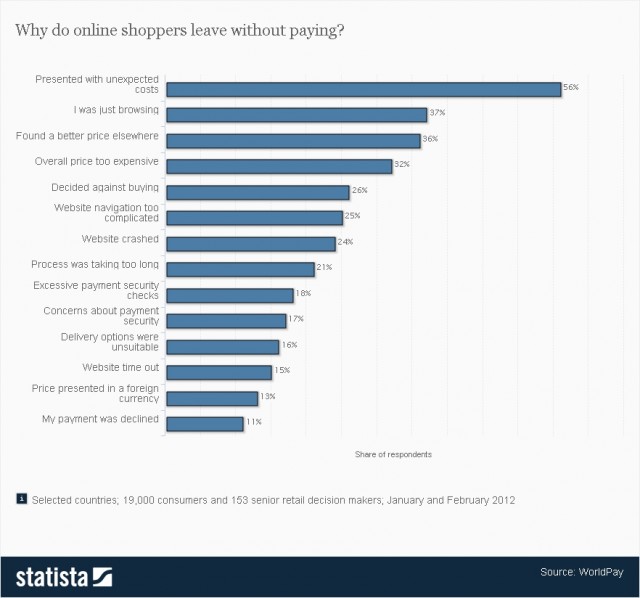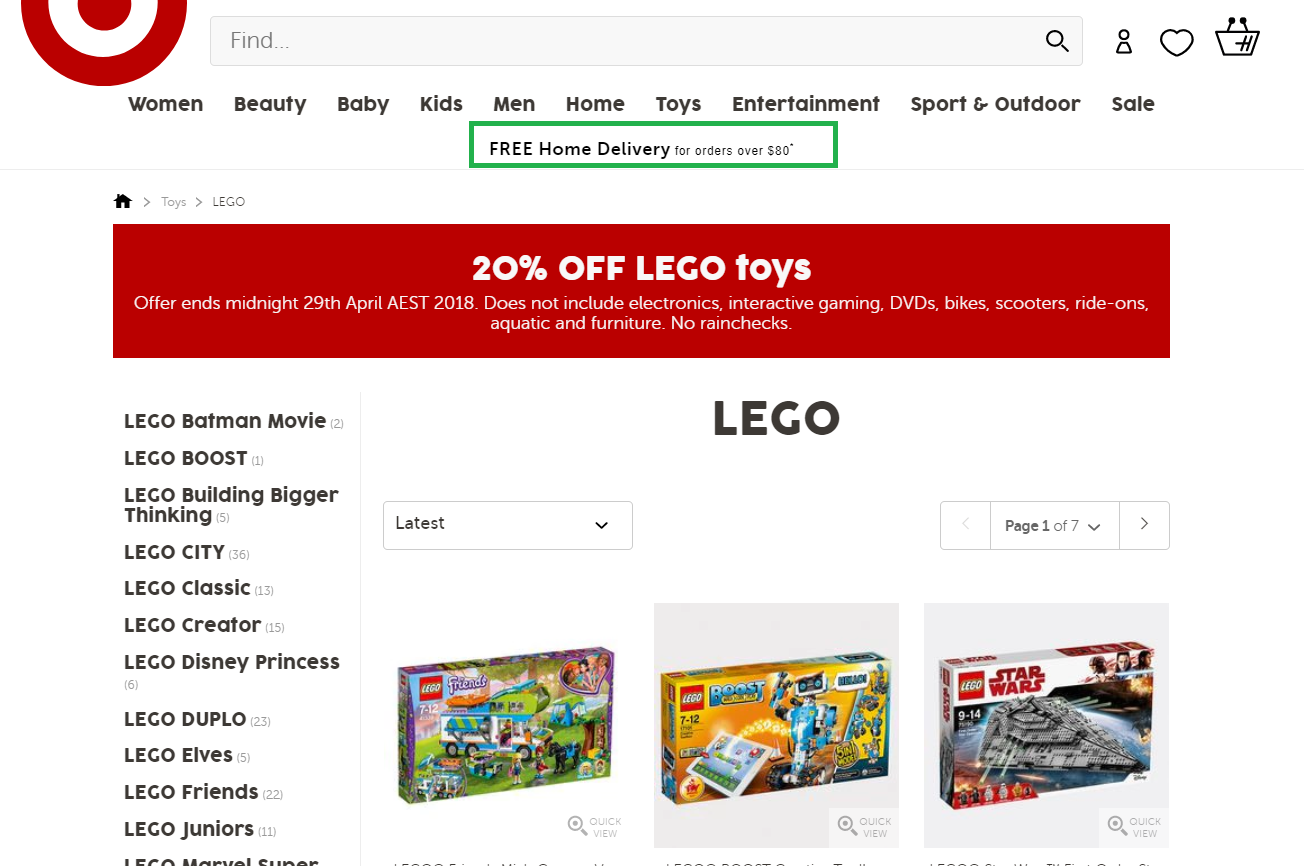When running discounts and promotions, is it better to show prices based on the dollar amount saved ($) or the percentage off (%), and when should you provide free shipping?
Knowing how to successfully switch between $ and % off or when to offer free shipping can drastically increase your sales without compromising your sales margins.
In this article, I’m going to show you when to use $ amounts off, % off, or free shipping.
When to offer free shipping
Let’s start with the easy one: free shipping.
Personally, if I’m buying a product that will be shipped to me from the same country, I do get a little annoyed if I have to pay shipping – and I’m not the only one who thinks like this.
The #1 reason online shoppers don’t make a purchase is because of unexpected costs at checkout.

(Source)
But I get it: if you’re shipping heavy items or your sales margins are thin, it might not be profitable to offer free shipping.
What to do?
I suggest two solutions to appease your customers. The first is to offer free delivery if a customer spends over a certain amount, and clearly state this on your website before they get to the checkout page.
Here’s the homepage of e-commerce giant Target:

As you can see, they state there is FREE delivery for orders over $80. If the shopper does not want to spend $80, they are pre-framed that when they get to the checkout, they will be presented with a delivery fee.
This will reduce the amount of cart abandonment rates as the delivery fee is no longer unexpected.
Smart.
The other time I would offer free shipping is to new customers as they are often on the fence as to whether to order. Giving them free shipping on their first order will increase the amount of new customers you acquire. If you have a healthy customer lifetime value, then offering a single free delivery should not impact you too much.
In a nutshell, offer free delivery if you can. If you can’t offer free delivery, make it clear on your store that there is a delivery charge so you do not annoy prospects at the checkout.
Fixed dollar ($) amount or percentage off (%)?
Knowing when to use a fixed dollar amount or percentage off is a little trickier.
You can A/B test to find out, but you’ll need to A/B test every single sales promotion you do. This is fine if you run the same promotions on a quarterly or yearly loop, but if you’re always coming out with bespoke promotions, there’s little value to A/B test as your promotions typically won’t run for too long and you’ll not reach statistical significance.
When choosing between $ or % off, ask yourself: Which amount has a higher perceived value?
For example, if you’re selling a product at $1,000, which of the two amounts gives you a higher perceived value:
- 15% off
- $150 off
$150 off wins.
Now, say you’re selling a product for $20, which of the two has a higher perceived value?
- 15% off
- $3 off
15% off wins.
In both examples the amount off was exactly the same, but our brain processes the numbers differently.
Ask yourself which of the two sounds more irresistible to the shopper and go with that. From my experience the one giving a higher perceived saving wins when selling individual products.
When you’re running sales on entire product categories or storewide, percentage off discounts tend to work better because the more items a prospect adds to their cart, the more they save.
For example, 25% off all items will lead to prospects buying more as there’s an incentive to buy more as they will save more.
If you run a dollar amount promotions such as $100 off when you spend over $500, the shopper has very little incentive to spend more than $500. In fact, every $1 they spend over $500 provides them with less value.
When choosing between the two, always think about your profit margins. While you will drive more sales running a fixed % off for categories or storewide sales, will you end up generating more net profit if you opted for a fixed amount ($) off?
What works best for your store?
Every store is different, and so is your audience.
Start playing around with both and try to look for patterns. You might find that fixed dollar amounts tend to be better for high-ticket items because the number is a lot larger, whereas percentage off discounts work for low-ticket items.
Once you understand patterns and customer behavior, you’ll know when to run which type of offer.
With all that said, the key take-away from this article is that if you don’t offer free shipping, clearly state shipping costs before the prospect makes it to the checkout page.
As for determining when to use $ or % off, research and learn which has the higher perceived valued and whether the promotion will stay in line with profit margins.
If you aren’t already, spy on competitors or the biggest brands in your niche to see what they are using, because they will have tested everything and know what works.